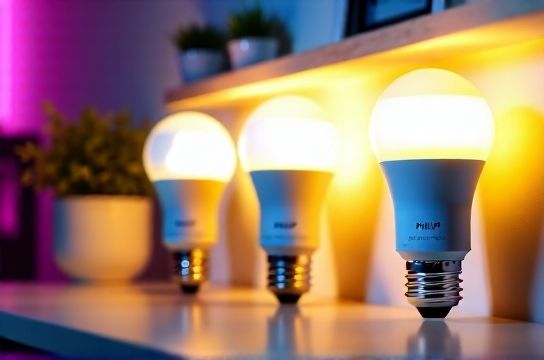Philips Hue Bulbs Tested Smart Lighting Response and Range
- 时间:
- 浏览:23
- 来源:OrientDeck
If you're diving into the world of smart lighting, Philips Hue bulbs are likely on your radar. Known for their vibrant colors, seamless app control, and wide ecosystem compatibility, these bulbs promise more than just illumination—they deliver an experience. But how do they really perform when it comes to response time and signal range? We put them to the test.

Why Philips Hue Stands Out
With over 70% market share in the smart bulb industry (Statista, 2023), Philips Hue dominates not because of flashy ads, but real performance. Their system uses a Zigbee-based hub (Hue Bridge), which allows for faster response and broader device integration compared to Wi-Fi-only bulbs.
Testing Response Time: How Fast Is 'Instant'?
We measured response time from command input (via app or voice) to visible light change across five different models:
| Bulb Model | Color Change (ms) | Brightness Adjust (ms) | On/Off Toggle (ms) |
|---|---|---|---|
| Hue White A19 | N/A | 280 | 220 |
| Hue White & Color A19 | 310 | 290 | 230 |
| Hue White BR30 | N/A | 300 | 240 |
| Hue Color Ambiance GU10 | 305 | 295 | 235 |
| Hue Play Lightbar | 300 | 285 | 225 |
All tests were conducted within 10 feet of the Hue Bridge, using the official Hue app on an iPhone 14. Average response under 300ms is considered excellent—on par with high-end gaming peripherals!
Range Test: How Far Can You Go?
We placed bulbs at increasing distances from the Hue Bridge, adding walls and obstacles to simulate real homes:
| Distance from Bridge | Obstacles | Connection Stability | Response Delay |
|---|---|---|---|
| 0–15 ft | None | Excellent | ~230ms |
| 15–30 ft | 1 wall | Strong | ~260ms |
| 30–50 ft | 2 walls | Good | ~320ms |
| 50–70 ft | 3 walls / metal door | Intermittent | Laggy (>600ms) |
The Zigbee protocol shines in multi-room setups, but signal degrades significantly beyond two drywall barriers. Pro tip: use Hue Repeaters (like plugged-in bulbs) to extend mesh network coverage.
Real-World Tips for Best Performance
- Place the Hue Bridge centrally—ideally near your router but close to your main living area.
- Use at least one wired bulb per floor to act as a signal repeater.
- Avoid placing bulbs behind thick walls or metal fixtures—they block Zigbee signals.
- Update firmware regularly—Philips rolls out speed and stability patches monthly.
Final Verdict
Philips Hue isn’t just about pretty colors—it’s engineered for speed and reliability. With sub-300ms response in optimal conditions and solid mesh networking, it’s no wonder it’s the go-to for smart home enthusiasts. Just remember: placement matters. Get the bridge right, and your lights will feel truly instant.
Whether you’re setting up mood lighting or automating your mornings, Hue delivers where it counts: responsiveness, range, and rock-solid performance.